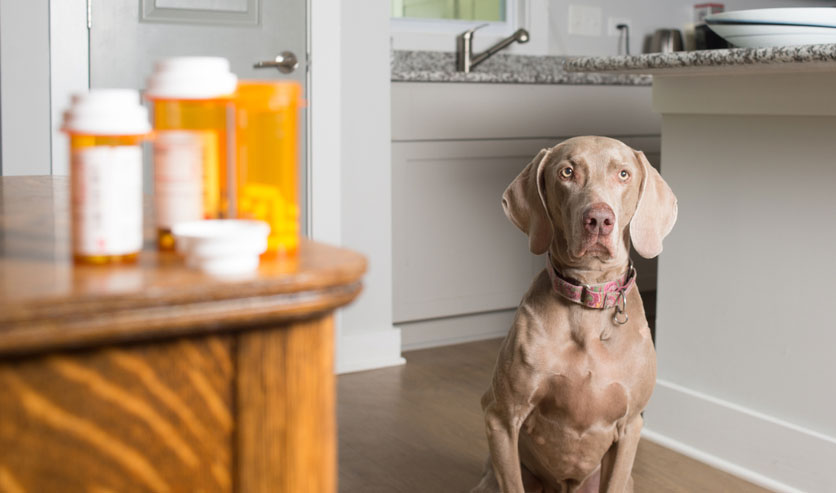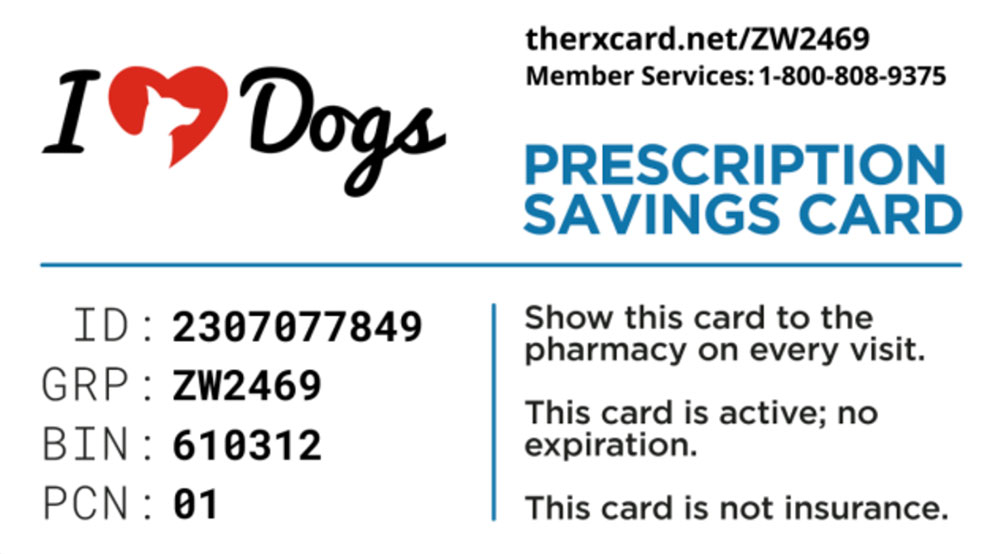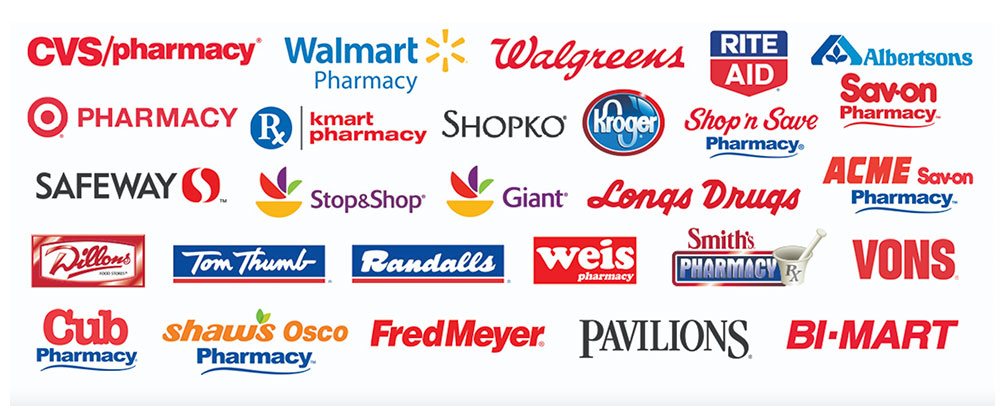Are you looking for a way to save your dog’s Ranitidine prescription? Our Rx Discount Card for Pets can save you up to 80% of your pet’s Ranitidine.
What Pharmacies Accept This Ranitidine Coupon Card for Pets?
This card is accepted at over 60,000 participating pharmacies in the US, including:
How Much Will My Pet’s Ranitidine Cost Using This Coupon?
In order to view a real-time pricing estimate, please use our pricing lookup tool here.
How Do Prescription Discount Cards for Pets Work? How Can It Help Me Save On My Dog’s Ranitidine Prescription?
Prescription discount cards for pets work similarly to those for humans. They are designed to provide discounted prices for prescription medications, and can be especially helpful for pet owners whose pets require regular medication or have ongoing health issues. Here’s how they work:
- Obtaining the Card: These discount cards can often be obtained online, often for free or a small fee. You’ll typically have the option to print out a physical card, receive a card in the mail, or use a digital card on your phone.
- Using the Card: When you go to the pharmacy to fill your pet’s prescription, present the discount card to the pharmacist when you’re checking out. The pharmacist will calculate the cost of the medication with the discount applied.
- Savings: The amount of money you save will depend on the specific medication and the discount agreement the card provider has with the pharmacy. Some medications may have significant discounts, while others may be more modest.
- Participating Pharmacies: These cards usually work within a network of pharmacies, so they are only valid at participating locations. Some cards may be accepted at a wide range of pharmacies, while others may be more limited. It’s always a good idea to check which pharmacies accept your card.
As for your dog’s ranitidine prescription, a pet prescription discount card could potentially help you save money, depending on the terms of the card and whether ranitidine is included in the list of discounted medications. Always check with your card provider and your pharmacy to ensure that you’re getting the best price.
Remember, though, that the best way to ensure your pet’s health is to consult with your vet about the appropriate medication and treatment. They can provide you with the most accurate and current information based on your pet’s specific health needs.
What Are Some Common Reasons Ranitidine is Prescribed for Dogs?

Ranitidine, also known by the brand name Zantac, is a medication that reduces the production of stomach acid. It’s used in both human and veterinary medicine. In dogs, it can be prescribed for a variety of reasons:
- Gastric ulcers: Ranitidine can be used to treat gastric (stomach) and duodenal (intestinal) ulcers by reducing the production of stomach acid. Less acid means there’s less irritation to the ulcer, allowing it to heal.
- Esophagitis: This is inflammation of the esophagus, often caused by acid reflux. By reducing stomach acid production, ranitidine can help alleviate the symptoms of esophagitis.
- Gastritis: This is inflammation of the stomach lining, which can be caused by a variety of factors. If the inflammation is related to acid, ranitidine may be helpful.
- Acid Reflux: If a dog is diagnosed with gastroesophageal reflux disease (GERD), ranitidine can be prescribed to reduce the acid production and help control the disease.
- Mast cell tumors: These tumors can lead to a variety of symptoms, including excessive production of stomach acid. Ranitidine may be used as part of the treatment plan for dogs with these types of tumors.
The dosage of ranitidine for dogs is typically much smaller than the dose for humans, so it’s important to follow your vet’s instructions. Additionally, ranitidine has been recalled in many places due to potential contaminants, so be sure to discuss this with your vet.
As with any medication, it’s important to watch for potential side effects, which can include diarrhea, vomiting, rapid breathing, or changes in heart rate in dogs. If you notice any of these signs, or if your dog seems to be in pain, contact your vet right away.
What Are Some Other Ways I Can Save Money on My Pet’s Ranitidine Prescription?
In addition to using a pet prescription discount card, here are some other strategies to potentially save money on your pet’s ranitidine prescription:
- Comparison Shop: Costs can vary among different pharmacies. Check prices at several pharmacies to see which one offers the best deal for your pet’s ranitidine prescription. This includes both local and online pharmacies. Remember to ensure that any online pharmacy you use is reputable and properly licensed.
- Ask About Generic Options: Ranitidine is a generic medication, but there may be different manufacturers that offer it at different prices. Check with your vet or pharmacist to see if there are less expensive generic options available.
- Buy in Bulk: If your pet will be on ranitidine long term, it may be more cost-effective to buy the medication in larger quantities. Ask your vet or pharmacist if this is a possibility.
- Talk to Your Vet: If the cost of medication is a concern, discuss this with your vet. They may be able to provide samples, suggest alternative medications or treatments, or find other ways to help reduce costs.
- Manufacturer Discounts or Rebates: Sometimes, manufacturers offer discounts or rebates on their medications. It’s worth checking the manufacturer’s website or asking your vet if they’re aware of any such programs.
- Pet Insurance: If your pet has insurance, check to see if it covers prescription medications. While many plans only cover accidents and illnesses, some also offer coverage for prescription medications.
Remember, it’s always important to consult with your vet before making any changes to your pet’s medication regimen. They can provide you with the most accurate and relevant advice based on your pet’s specific health needs.


 Toledo, United States.
Toledo, United States.